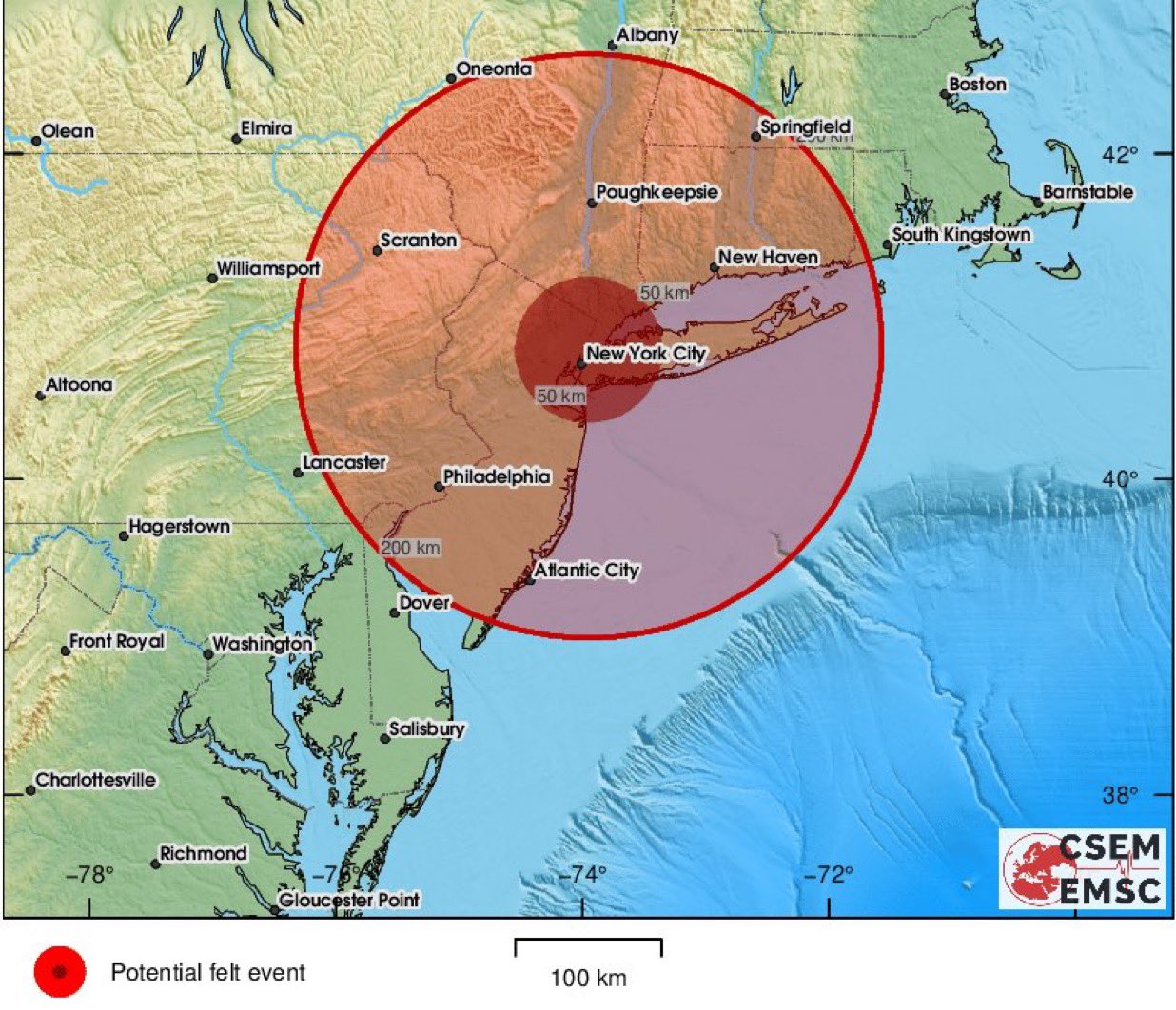
A 2.7 magnitude earthquake was reported in the New York area, sparking surprise and mild concern among residents who are unaccustomed to seismic activity. According to preliminary data from the United States Geological Survey (USGS), the earthquake occurred earlier today, with its epicenter located near Yonkers, just north of Manhattan. The tremor struck at a shallow depth of approximately 5 kilometers, making it more likely for residents on the surface to feel the shaking.
Although considered a minor earthquake by geological standards, the event caused a brief stir in a region that rarely experiences measurable seismic activity. Social media quickly filled with posts from people in New York City and surrounding communities describing their experiences. Many reported feeling a slight rumble, likening it to the sensation of a large truck passing by or a brief jolt underfoot. Others said they heard windows rattle or noticed furniture shift slightly, though no injuries or serious damage have been reported.
Local authorities, including the New York City Emergency Management Department, confirmed they were aware of the incident and have been monitoring the situation closely. In a public statement, officials assured residents that there was no cause for alarm, as the quake was relatively weak and unlikely to produce any structural damage. “Our preliminary assessments show no impact to critical infrastructure,” the statement read. “We encourage residents to remain calm and report any damage if found.”
Earthquakes of this magnitude are typically not dangerous but can be startling, particularly in urban areas unaccustomed to seismic movement. The northeastern United States lies within what is considered a stable continental region, far from major tectonic plate boundaries. However, the region is not entirely immune to earthquakes. Historical records show that the area has experienced occasional low-magnitude tremors, often caused by minor faults buried deep within the Earth’s crust.
Experts at Columbia University’s Lamont-Doherty Earth Observatory explained that while such earthquakes are infrequent, they are not entirely surprising. “The Earth’s crust in the northeastern U.S. is old and rigid, but it still contains faults that can occasionally slip and release built-up stress,” said Dr. Helen Ortega, a seismologist at the observatory. “A 2.7 magnitude quake is very modest in energy release, but because of the dense population and infrastructure, it tends to grab attention.”
Public transportation and airports in the area reported no delays or disruptions related to the quake. The Metropolitan Transportation Authority (MTA) stated that subway systems and commuter rail lines continued to operate normally, though engineers conducted routine inspections out of an abundance of caution.
While the tremor did not cause any major incidents, the event served as a reminder of the importance of emergency preparedness, even in regions where earthquakes are rare. Authorities urged residents to review basic safety measures, such as identifying sturdy shelter spots within their homes and workplaces, and to consider participating in future earthquake drills.
Insurance providers in the area also saw a brief uptick in inquiries, particularly from homeowners curious about earthquake coverage, which is often not included in standard policies in the Northeast. While the chances of a damaging earthquake remain low, events like today’s remind residents that the possibility—however small—does exist.
As data continues to be analyzed, seismologists will monitor for any potential aftershocks, though they say the likelihood of significant follow-up activity is minimal. The USGS will also continue to refine the location and details of the earthquake in the coming hours as more sensor data becomes available.
For now, the minor earthquake leaves New Yorkers with little more than a story to tell, and perhaps a renewed awareness that even the ground beneath one of the world’s busiest cities can, on occasion, briefly shake.




